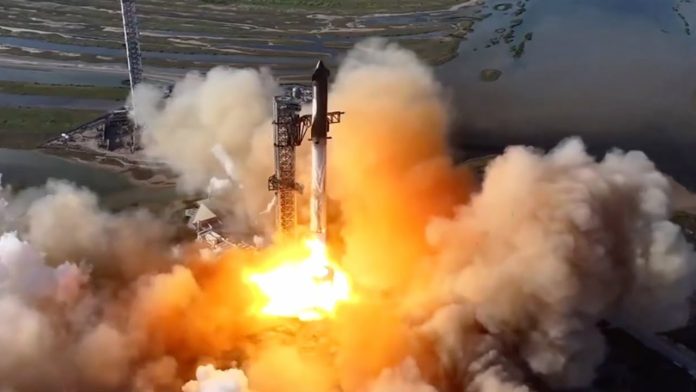13 жовтня минулого року компанія SpaceX здійснила один з найбільших технологічних проривів у галузі космічних досліджень. Їхня найновіша ракета – Starship – злетіла в космос і успішно повернулася на Землю, підтвердивши можливість її повторного використання. Це відкриття стало важливим кроком у напрямку значного здешевлення космічних місій та створення нових можливостей для досліджень у космосі. Всі ці досягнення можуть поставити NASA в ситуацію, коли їй доведеться переглядати власні програми.
Starship – це не просто ще одна ракета. Це найпотужніша ракета, коли-небудь створена людьми, з величезним потенціалом для змін у космічній індустрії. Ракета має два основні ступені: гігантський ракето-носій Super Heavy та космічний корабель, який розміщується на його верхньому ступені. Під час останнього випробування ракета досягла висоти 65 км і повернулася назад, забезпечивши рекордну швидкість під час сповільнення перед приземленням. Важливим досягненням стало те, що ракета-носій змогла піднятися в повітря, а потім була захоплена маніпуляторами на стартовій платформі після приземлення, що продемонструвало можливість повторного використання ракети. Цей успіх відкриває нові горизонти для космічних місій. Вартість запуску Starship оцінюється в 10 мільйонів доларів, що в 10 разів дешевше за традиційні ракети. З прогнозами на те, що ракета зможе здійснювати запуск кожні два-три тижні, вартість досліджень у космосі значно зменшиться, що дозволить проводити більше експериментів та місій, які раніше були економічно недосяжні.
Один з найбільших суперників SpaceX у галузі космічних запусків – NASA – поки що залишається позаду. Ракета Space Launch System (SLS), розроблена для виконання важких місій, надзвичайно дорога й одноразова. Оцінки вартості кожного запуску SLS коливаються в межах мільярдів доларів, тоді як запуск Starship обходитиметься всього в 10 млн доларів. Таким чином, нова ракета SpaceX може змінити правила гри, зробивши старі ракети, такі як SLS, менш конкурентоспроможними. Для SpaceX це може стати не тільки фінансовим проривом, але й великим кроком вперед у планах щодо освоєння Марса. Ілон Маск активно працює над реалізацією своєї амбітної мети – колонізації червоної планети. Уже в наступні кілька років він обіцяє запустити безпілотні ракети на Марс, а через чотири роки здійснити перші пілотовані місії. Маск планує, що за 30 років на Марсі може з’явитися колонія з населенням до мільйона осіб. Попри вражаючі досягнення, деякі вчені скептично ставляться до планів Маска. Подорож на Марс – це неймовірно складне завдання, яке потребує не лише технологічного прогресу, але й розв’язання багатьох інших проблем, таких як забезпечення життєвих умов для людей, безпека космічних подорожей та сталий розвиток колонії. Однак з огляду на успіхи SpaceX у створенні Starship, можна припустити, що це лише початок великого шляху до реалізації космічних амбіцій Маска.
Поки що Starship виявляється одним з найбільших технологічних досягнень в історії освоєння космосу. Якщо цей проект вдасться довести до кінця, ми станемо свідками революції в космічних місіях, які стануть доступними для держав, компаній і навіть дослідників з усього світу. Завдяки зниженню вартості запусків, нові можливості відкриються для науки та бізнесу, а досягнення Ілона Маска можуть визначити наступні десятиліття в космічних дослідженнях.


